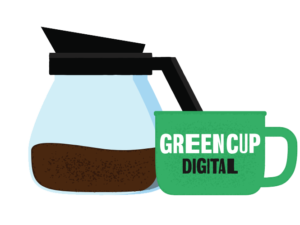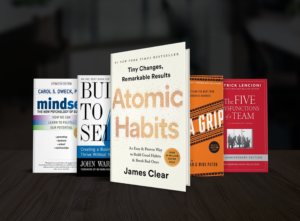How To Serve the right content, to the right people, at the right time.
If you’re looking for growth in your business, the stages of inbound marketing can help you achieve incredible results. We at GreenCup Digital pride ourselves on the partnership we create with our clients. This relationship is something we value and work relentlessly to maintain. So why wouldn’t our services reflect the same foundational principles? That’s why we support the inbound methodology of attracting customers by creating experiences tailored to them.
Are you looking to do the same for your clients? The concept of inbound marketing is easier to digest than you may think. It’s broken down into three main stages: Attract, Engage, and Delight.
Here’s how you can master each stage of Inbound Marketing in your business:
Attract
When people are looking for a company, it’s usually to help them solve a problem. For example, maybe they want to build a home but aren’t quite sure of the process. Or they have a leaky sink and all the tools but can’t remember the steps to fix it properly. Helping your clients answer basic industry questions will deem you an authority on the topic and build trust.
Here are a few ideas to help Attract clients to your business:
SOCIAL – Social media is a great way to not only connect with your clients but share tips and industry insight. It’s also a great place to share testimonials about your products or services!
For example, if you’re in the financial industry, tell your clients about changing laws they may not be aware of, but most of all, how it will impact them.
If you’re a dog groomer, share how your clients can maintain their dog’s appearance between visits, including your recommendations on dog shampoos.
If you’re a small business offering products, share how a single product could impact (or better yet, improve) someone’s day-to-day. For instance, a new coffee mug that says “you’re kicking ass today,” yep, I need that on my desk!
CONTENT – Content is one of the most cost-effective entry points to digital marketing. If your website doesn’t have a blog, consider adding one. Do you already have a blog? Try increasing the amount of content you’re producing, or try varying your content types by adding infographics, case studies, ebooks, and more.
Content is so valuable at this stage. But, again, remember, in the attract stage, you’re looking to build trust.
For example, as you begin to attract, be sure you’re asking for email addresses! Gating some of your most valuable content will not only help you build your email list but also help lift you into the next stage of “engage”!
SEO – Now we know SEO, or Search Engine Marketing, is one of the most complex topics for our clients to wrap their heads around. Still, to attract clients, you need to be in front of them! Completing essential SEO on your website is the perfect first step to gaining traction.
Have you recently done any keyword research? This can not only help in completing essential SEO for your website but also in generating new blog post topics.
Is your business submitted to local directories? This is critical in helping establish your business as a reputable brand while also getting you found in local searches.
Our SEO checklist is the perfect resource to help you begin improving your SEO to attract more clients.
FREE SEO CHECKLIST
Boost your SEO today with our free checklist!
Engage
Now that you have their attention, engage them. This is often the point where prospects consider whether or not they want to move forward with your business. Having clearly defined personas can assist you in targeting the challenges and goals of your clients. It’s crucial at this stage to not just sell a product but invite them into a solution.
The difference between selling and inviting is in how much VALUE you provide. One of my favorite phrases and one I often refer to when working with clients on their inbound strategy is to “BE A RESOURCE.”
When generating content ideas, it’s great to have a brain dump. Working with your customer service team can greatly help in this department, as they hear the struggles of your client base daily! Once you have a list of ideas, ask yourself on each one, “Am I a valuable resource?” If the answer is yes, great, put it to work! If the answer is no, reassess the topic to find a way you can be.
CONTENT: The exercise mentioned above is a great way to create more blog posts and downloads, but it can often help you identify a series of related issues. This is where email marketing can come into place!
Your client wants to sell their current home to build a new home. First, capture their email on an introductory blog post. Then, send them a series of follow-up emails that walk them through the steps of how to sell their home and prepare for a new build.
Another example could include a holiday just around the corner. Create a gift guide post to capture an email address. Then by using email marketing, walk them through additional gift ideas for each member of their family.
EMAIL MARKETING: The above examples are what we call Lead Flows and start with content on your website. Once that email is captured, deliver content that’s relevant to them. This doesn’t mean dumping all these emails into your “general” list that sends them weekly sales and updates about your cat’s recent surgery. What it means is delivering the right content at the right time! Marketers who use segmented campaigns note as much as 760% increase in revenue.
WEBSITE: When it comes to engagement, your website must consider the users’ experience. While the first stage may have attracted them here, what techniques do you have in place to either further engage them with your brand or entice them to return?
One trendy example is conversational bots. While a typical person may find them annoying, they’ve significantly up their game in the past few years to offer more options when these bots are triggered.
When used properly, they can be a great introduction to your brand and help guide users towards help desk articles or services that best fit them.
Delight
To keep the momentum going, delight your clients to ensure they are not only satisfied but supported. This stage is often one of the most overlooked but crucial stages in keeping leads coming in. For those customers you delight, they’ll often promote your business by word of mouth and testimonials which are highly considered in the attract stage. By delighting customers, the cycle continues driving new leads to your business.
SMART CONTENT: Smart content is customer-centric, targeting particular demographics, and strategically includes things like blog posts, but also email marketing, and surveys.
A common way to delight is by offering tips and tricks on how your client can get the most of your service through targeted smart content. For example:
Your client just walked out of their spa day with your salon. Now’s the time to follow up with email marketing to provide additional tips for maintaining their manicure. Then a few weeks later, consider sending them a discount to come back, or better yet, share with a friend.
The same can be said for products. Your customer just bought your blender. Send a follow-up via email with the best ways to clean their blender and make smoothies the whole family will love.
Another great piece of smart content that truly is a win-win for you and your client is surveys. Not only can they help you improve your products and services, but they also give you insight into what your customer needs to better attract, engage and delight them!
Surveys should be kept short and triggered at defining moments in your buyer’s journey to optimize their experience and insight.
SOCIAL MEDIA: Don’t forget to “listen” to customers after a sale. Social listening can help you craft an effective social media strategy by engaging with past customers to help amplify their testimonials and spotlight their experience. Doing so makes them feel like they are valued. While new acquisitions are popular for social campaigns, 66% of marketers say social listening has increased in value for their organization in the past 12 months.
MARKETING AUTOMATION: The best part about this stage is that automation can significantly improve the timing and satisfaction of your customers while easing your workload. Automation can also help with reporting to determine what strategies are working, who your most valuable personas are, and how to improve continually.
Get started with the Stages of Inbound Marketing
As you can see, Inbound Marketing is content-heavy and does take time to develop. It requires a strategy to deliver the right content, to the right people, at the right time. And in doing so, it can help build trust in your brand, a relationship with your customers, and qualify leads that end with more sales.
Inbound Marketing is a strategy we love at GreenCup Digital and help our clients to achieve. Are you looking to better partner with your clients? We can help create inbound strategies that deliver. Contact the GreenCup Digital team today!





